10 Inexpensive Spring Superfoods
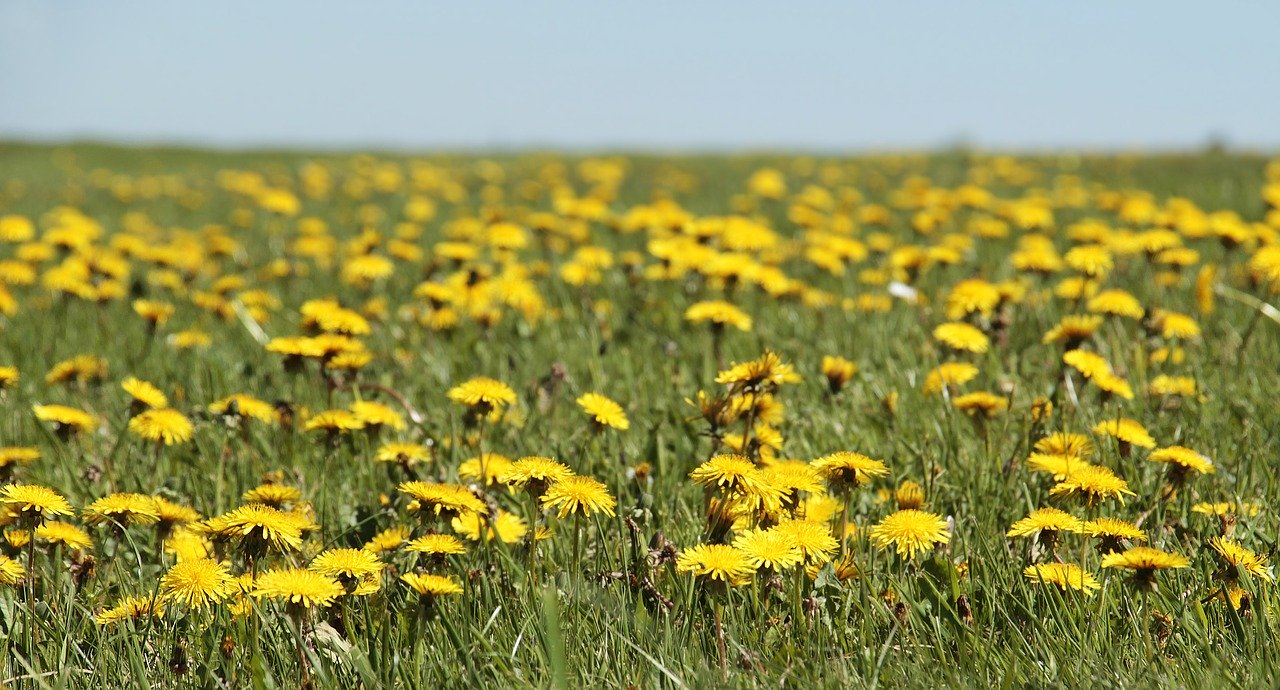
Eating nutrient-dense foods doesn’t have to be expensive, the secret is to buy in-season…
Focusing on vegetables and fruit in season is not only a smart money-saving strategy, but it is also the best way to enjoy them when they are at their peak in flavour and more complete from a nutritional point of view. Remember to buy organic when possible.
The world as we know might be on stand-by, but nature keeps going, seasons keeps rolling, and Spring is here already!
Let’s see what nutritious gems this season brings:
Dandelion
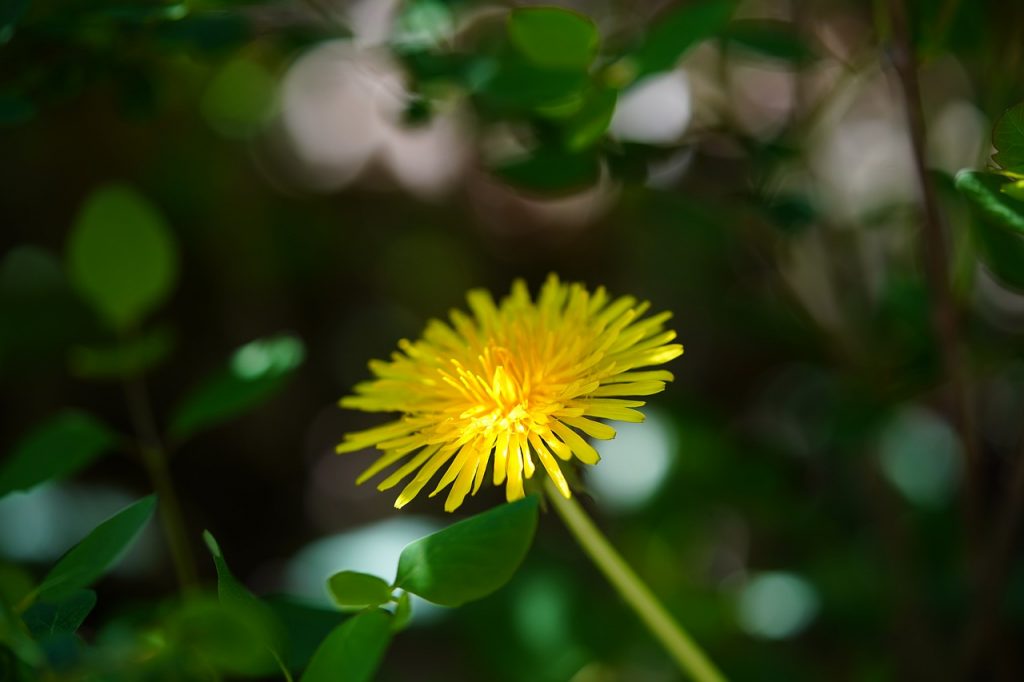
Dandelion is indeed one of the first signs Spring has arrived! This bright yellow flower is popping up everywhere in our fields and gardens, cheerful as a little sunshine.
Considered an invasive weed by many, dandelion (Taraxacum officinale) is actually a medicinal plant that has been used for its healing properties over the centuries, and what people don’t realize is that they are destroying a medicinal powerhouse that they often need.
As a herbalist, I can say that there are no “weeds”, and that often wild herbs do sprout in our trimmed gardens because we need them!
Dandelion is in fact a powerful detoxifier, it has been used as a tonic for liver health for centuries, it’s a diuretic, antioxidant, it promotes proper digestion, it boosts our immune system, and its chemical constituents are currently being studied for their anti-cancer properties.
The whole plant is healing: flower, stem, leaves and root.
Dandelion is super rich in vitamin K and contain also vitamins A, C and Bs, calcium, iron, zinc, potassium, manganese, folate, magnesium, phosphorus, and copper.
The root is probably the part with the most health benefits, since it also contains inulin, which is a prebiotic, meaning that it feeds the good bacteria in our gut and can help to restore a healthy balance of microorganisms in our intestine (the root will be richer of inulin in autumn).
You can find dandelion all year round in health food stores, but if you choose to wild-harvest, make sure you avoid roadsides and fields you are not familiar with, because toxic pesticides are often used to kill this so-called “weed”.
Enjoy the raw leaves (and the yellow flowers!) in salads and smoothies; blitz them with pumpkin seeds, some lemon juice, extra virgin olive oil and fresh garlic for a super healthy dandelion pesto; add them to soups, or sautee with a drop of olive oil, chili and garlic, for a delicious side dish.
Dig up carefully the root, chop or grind it finely, put 1/2 – 1 tsp in a pot with cold water, bring it to the boil and let it simmer covered for 15-20 minutes. Turn off the heat and let it rest for 10 minutes more, always covered. Strain and enjoy your dandelion root decoction! If you like, add half teaspoon of good quality organic honey
If you harvest large amounts of dandelion roots, make sure you dry them out before storing.
Did you know? Dandelion, an oracle for love: according to popular beliefs, to check if a love will be corresponded, you just have to blow on the pappi: if they all fly away, love is assured, if some of the feathery hair stay on the stem, you need to wait as many months as the number of hair left.
Arugula (Rocket salad)
We are used to see rocket salad in supermarkets all year-round, but Spring is its season.
This peppery salad helps us to detoxify and to oxygenate and cleanse our blood, it stimulates our digestion, and it works amazingly as a cough syrup!
It contains an impressive array of nutrients (high content of chlorophyll, folate, vitamin A, C and K, and minerals such as calcium,magnesium, potassium, zinc, manganese, phosphorus, copper and iron), and special sulphur-containing compounds called glucosinolates; when eaten, these break down into powerful compounds such as indole-3-carbinol and sulforaphane, which are currently studied for their anti-cancer properties.
Rocket is also a good source of protein and a very good source of dietary fibre.
Very easy to grow, you can plant it on your windowsill or balcony and see it sprout in no time. Keep harvesting the leaves to give space to the new ones.
Did you know? In ancient times arugula was considered a potent aphrodisiac; the Romans were brewing the seeds in their love potions.
Strawberries
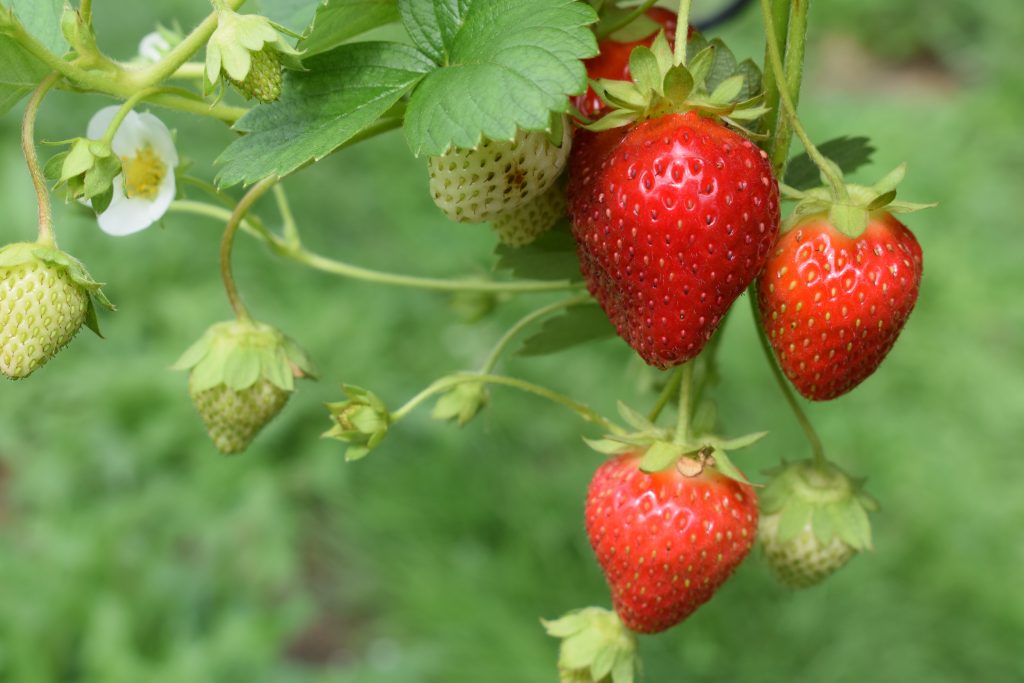
According to legend, when Adonis died Venus cried many tears which, by touching the ground, transformed into little red hearts, our strawberries.
These berries are really powerful: they have anti-inflammatory properties, thanks to their high flavonoids content (resveratrol, quercetin, kaempferol and anthocyanins amongst others), and they are rich in key antioxidants.
They are an excellent source of vitamin C and K, and they contain many more vitamins and minerals, such as manganese, folate, potassium, calcium, magnesium and vitamin E amongst the others.
They are also a very good source of fibre and omega-3 fats (in the form of ALA).
Unfortunately, strawberries do belong to the “Dirty Dozen”, a list with the twelve crops that farmers use the most pesticides on, so buying organic is especially helpful.
Did you know? Strawberries are very healing for sunburns; just apply a mashed strawberry on the skin and leave it on for a while to do its work.
Asparagus
The most common type of asparagus found in shops and supermarkets is green, but there is also a white variety more delicate in taste, and a purple one, which is smaller and tastier. No matter what type you choose, asparagus is a tasty and versatile vegetable that can be enjoyed in many recipes either cooked or raw.
Also a potent detoxifyer, asparagus provides us with an unique combination of anti-inflammatory nutrients; packed with antioxidants, this vegetable is rich in vitamin A, C and E, selenium and zinc, iron and potassium, vitamin K and folate, quercetin, rutin, glutathione and kaempferol, to name a few!
Moreover, it is rich in aminoacids like asparagine, a natural diuretic, and a fantastic source of inulin, an important prebiotic fibre.
Don’t panic if after eating this vegetable your urine smells stronger, it’s perfectly normal: asparagus contains a unique sulphuric compound that, when metabolized, gives off that smell in the urine. Nothing to worry about!
Asparagus is a perishable vegetable, it wrinkles, harden and loose flavour quite quickly; it is best to wrap the ends in a damp paper or towel and keep it in the fridge, and to consume it within a couple of days of purchase.
Spring onions
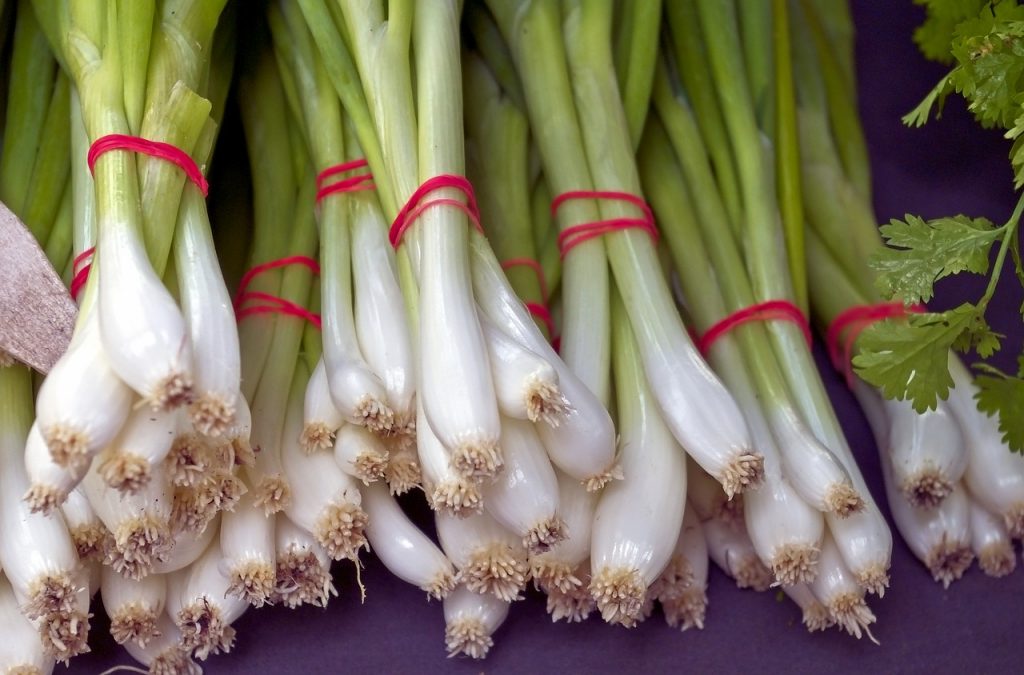
Spring onions were already grown in China thousands of years ago, and throughout the history they have been one of the most commonly used remedies for viral infections such as cold and flu, very useful in stimulating the respiratory system.
Nutritionally, spring onions have a combination of the benefits of onions and greens.
They are an excellent source of vitamin K and C, folate and many minerals (potassium, magnesium, manganese, calcium, phosphorus, iron and more!) and a very good source of vitamin A (in the form of carotenoids) and many B vitamins.
They are also a very good source of dietary fibre, so important for a smooth digestion.
Enjoy them raw to get all the healthy benefits, they are delicious in salad or pinzimonio
Green Peas
These sweet little green gems contain a unique mix of antioxidants and anti-inflammatory nutrients.
They are rich in catechins, beta-carotene, vitamin C, K and E, folate and zinc, and they contain high amounts of protein and fibre. Recent research has shown that green peas are also a reliable source of omega-3 fats (ALA).
Green peas are also a good source of minerals such as manganese, copper, phosphorus, magnesium, iron and potassium.
Radishes
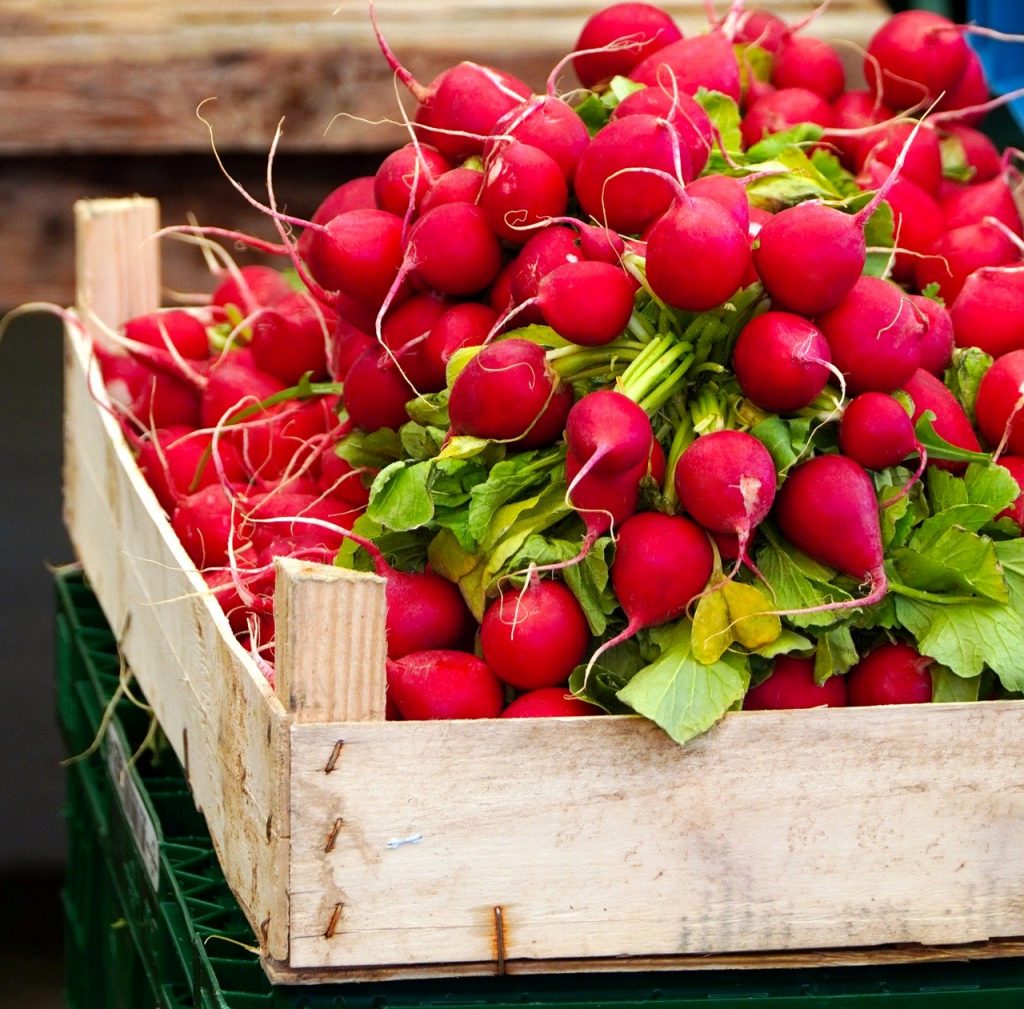
These tiny nutritional powerhouses are packed with minerals and vitamins, such as vitamin C, folate, potassium, iron, magnesium, calcium and more!
They are rich in fibre, diuretic and detoxifying, perfect for a detox menu.
Enjoy the crunchy flavour punch in salads or as part of your pinzimonio platter.
Rhubarb
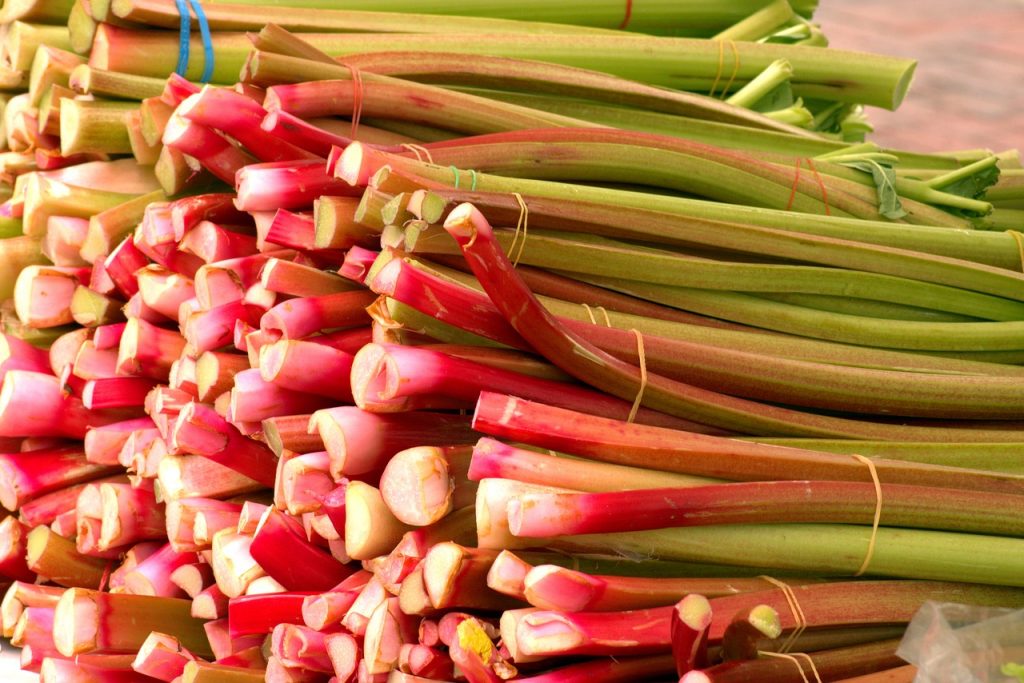
Rhubarb is a colourful and flavourful yet underestimated vegetable, wrongly considered a fruit, probably because it is mainly used in desserts nowadays.
Not so common in most modern people’s diets, the stalks have been used medicinally for centuries throughout the world.
In Asia, its roots are still used today most commonly in the treatment of digestive issues such as heartburn, constipation and diarrhea.
Thanks to its impressive nutritional profile, rhubarb could easily be “the next superfood on the market”. It is rich in antioxidants like vitamins C and A, it is a great source of folate, magnesium, potassium, phosphorus, manganese and vitamin K, and it has a high fibre content.
Make sure you don’t eat the leaves though, as they are poisonous; while only an extremely high amount can be life-threatening, eating even just one leaf can cause nausea and vomiting.
Artichokes
Artichokes are probably the less inexpensive vegetable on this list, but they are worth every penny.
Particularly rich in vitamin C and other antioxidants, Vitamin K, folate and vitamin Bs, dietary fibre and minerals such as iron, magnesium, potassium, copper, phosphorus and manganese, artichokes are a powerhouse of nutrients.
They are considered a liver detoxifyer (they contain cinarine, which stimulates bile secretion and increases cholesterol excretion), and they are helpful in liver and gallbladder issues, intestinal gas, constipation and IBS symptoms.
You can either cook them, or enjoy the tender leaves raw, with few drops of good quality extra virgin olive oil, lemon juice and fresh mint leaves.
Did you know? In 2008 in Sicily, a master ice cream maker created the artichokes ice cream; give it a try on your next holiday over there!
Apricots
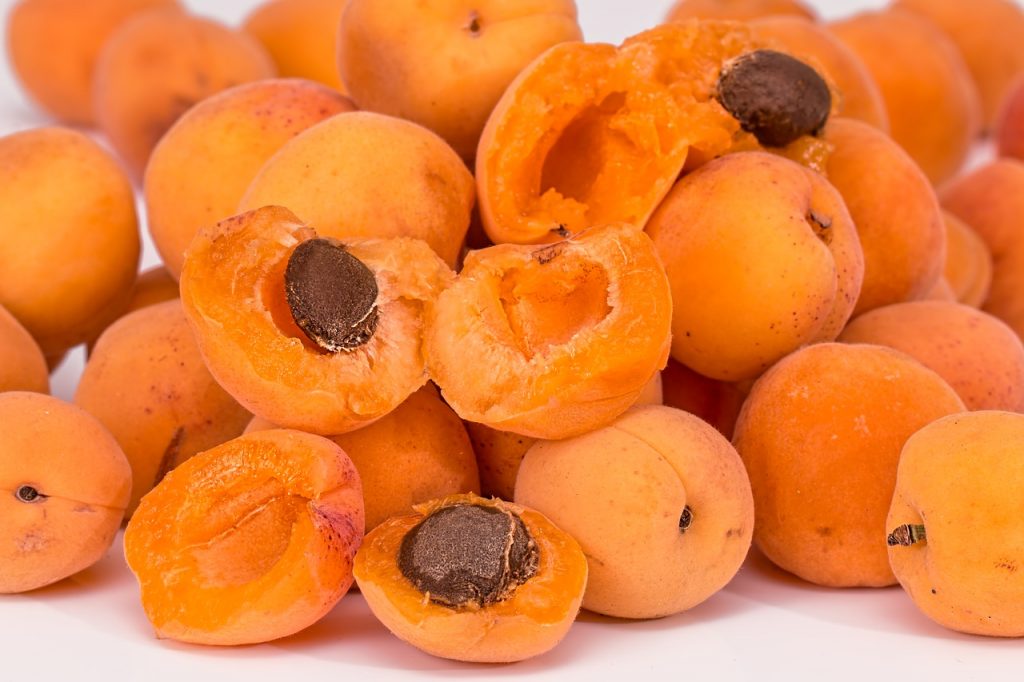
Apricots belong to the last part of the Spring season, and stay with us for most of the Summer.
They are rich in many antioxidants, such as vitamin A (carotenoids) and vitamin C, and other anti-inflammatory phytonutrients such as quercetin, catechins, lutein and lycopene.
They also are a good source of dietary fibre and of minerals like copper and potassium.
Their delicate taste goes well in fruit salads and smoothies, but you can also enjoy them cooked; they are famous in many cuisines across the world for being a tasty ingredient in meat dishes, stews and sauces.
And no, dried apricots are not the same thing! Apart from containing a high amount of sugar, they also could be treated with additives during processing to extend their shelf life.
